Android Central Verdict
Bottom line: Resident Evil Village takes everything you loved about the franchise and combined it with some homages to classic and modern horror to create something unique in video games today. It's an absolute spectacle, showing off the best of the RE Engine and the PS5 as a bonus.
Pros
- +
Hauntingly beautiful atmosphere and world design
- +
Great balance between survival horror and action game
- +
The four Lords are distinct and all frightening in their own way
- +
Runs great on PS5
Cons
- -
Map system is confusing
- -
Could've done more with the PS5 DualSense controller
Why you can trust Android Central
2017's Resident Evil 7: Biohazard worked as a reboot of the long-running series — and it was a necessary one. Resident Evil had been chugging along and selling well, but had transitioned into what was mainly an action game series with a couple elements of body horror thrown in. Critics and fans alike weren't here for where the series was going.
That's why Resident Evil 7 was so explosive, even if it's a relatively quiet game compared to its siblings. Capcom developers stripped the bombastic action games Resident Evil had become of most of its spectacle, moved it to a first-person view, and brought it back to basics: a creepy house with a lot of mystery. It suffered in the third act when trying to balance the new horizons the series could reach with the blueprint it had to follow, but it represented a new world of possibilities for the survival horror series.
Resident Evil Village is that next step. It's a game that harkens back to what made Resident Evil great at the start of the franchise — the sci-fi intrigue, the dread that comes with knowing you're a weak human, the challenging combat and puzzles — but carves a path for the future. It's a game that looks back at the history of horror, the influences that inspire fans of the genre, and pulls that all together in a celebration that can be terrifying, hilarious, campy, twisted, tense, and even sometimes emotional. Resident Evil as a franchise has had its ups and downs, but Resident Evil Village shows that there is plenty more to get out of the series.
Resident Evil Village: Story
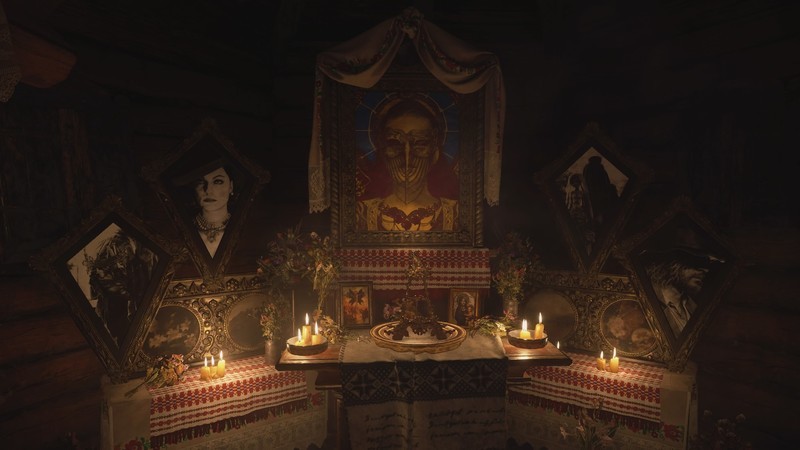
| Category | GameNameXXX |
|---|---|
| Title | Resident Evil Village |
| Developer | Capcom |
| Publisher | Capcom |
| Genre | Survival horror |
| PlayStation Version | PlayStation 5 |
| Game Size | 27.325GB |
| Play Time | 8-10 hours |
| Players | Singleplayer |
| PlayStation Now | No |
| Launch Price | $60 |
Resident Evil Village takes place a couple of years after the events of Resident Evil 7. Ethan and Mia Winters have settled in Europe with their new daughter Rosemary. They're dealing with some marital problems, but overall, things are quiet until Chris Redfield and his team bust into their home and unload a ton of bullets into Mia. Ethan then wakes up in an overturned truck on the outskirts of a Eastern European village, and the game begins.
It's a standard setup, especially for a Resident Evil game and especially where Ethan Winters is concerned, but Resident Evil Village ends up being a clever take on the series formula. It's absolutely still a Resident Evil game, all the way down to the big reveals, but it wears its influences proudly on its sleeve, and uses different aspects of the horror genre to change itself up as you play. You have four Lords to fight, not including the boss Mother Miranda, and each with their own areas to complete. It's a great way to break up the game into distinct parts and allow the developers to play around with the formula for each.
The first big area you get to beyond the village is Castle Dimitrescu, home of Lady Dimitrescu, the Tall Vampire Lady herself and her three shorter daughters. This section plays a lot like the police station in Resident Evil 2. It's a big area (probably the largest in the game) where you have to solve puzzles and explore multiple rooms and secret passages to get out. Lady Dimitrescu also stalks you around the castle like Mr. X or Nemesis — her heels heavily clacking on the floor above you or over in the next room as an added way to keep you on your toes. She's been arguably the star of the marketing ever since she was revealed during a showcase, and her presence lives up to the anticipation. She's alluring, but also threatening, and running away from her the first time is quite a challenge.
However, things take a turn in the second area at House Beneviento. The mysterious puppet woman has been left out of most marketing materials, but that's not because she doesn't leave her mark. Her area is the least combat heavy, but it's one of the most terrifying. The developers have created a tense, quiet, and relatively small escape room setup. It's reminiscent of Lucas Baker's traps in Resident Evil 7 but with a dash of Silent Hill added in. It's a section that has never been done in a Resident Evil game before, and it's all the better for it.
Get the latest news from Android Central, your trusted companion in the world of Android
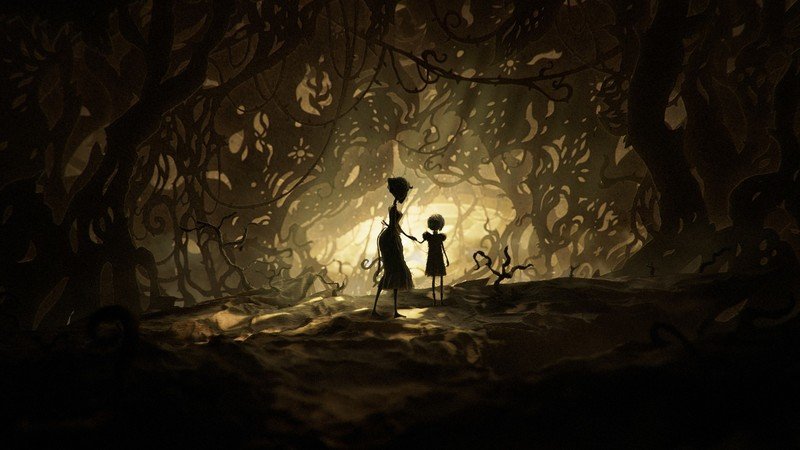
The other two main sections — Moreau's Reservoir and Heisenberg's factory — are more standard Resident Evil fare, but manage to stand out thanks to some great creature designs and the obvious homages to Lovecraftian horror and Frankenstein, respectively. The factory is properly chaotic, with Ethan quickly getting caught up in the smoke, flashing lights, and darkness of it all. It also gives players a completely new enemy type, and it's something so obvious and steeped in 1980s Japanese body horror conventions I'm shocked it hasn't been done before.
Resident Evil Village is a self-aware love letter to all types of horror and to the franchise as a whole.
Despite the multiple takes on horror tropes throughout the game's 10-hour runtime (less if you know what you're doing), it all feels cohesive. It's both in-line with Resident Evil traditions and takes some swings in innovation. Without going into spoiler territory, Ethan's story does wrap up in Village, and your reception of it will depend on if you prefer your Resident Evil grounded or outrageous. The game is bookended with a story book tale that Mia reads to Rosemary so you're immediately transported into a story that's supposed to be larger than life. From there, you're just along for a ride that can sometimes get a little too extravagent.
One of my biggest issues with the previous title was how it swung wildly from low-key horror to Resident Evil sci-fi nonsense. After the end of Resident Evil 7, I was expecting giant tentacle monster absurdity regardless of what creative monsters Village introduced or new paths it trekked down. While I was correct, it didn't feel as out of place. It feels more earned thanks to plenty of hints and build up placed throughout the game, and as a transition from 7. It feels like Resident Evil 7 faltered so that Village could run, and maybe that's alright.
Nothing here is super original, but seeing this long-running series taking risks is going to keep it all fresh for a lot of players, and might end up bringing in new ones as well. Resident Evil Village is a self-aware love letter to all types of horror — from the truly skin-crawling and tense to the campy and over the top — and to the franchise as a whole.
Resident Evil Village: Gameplay
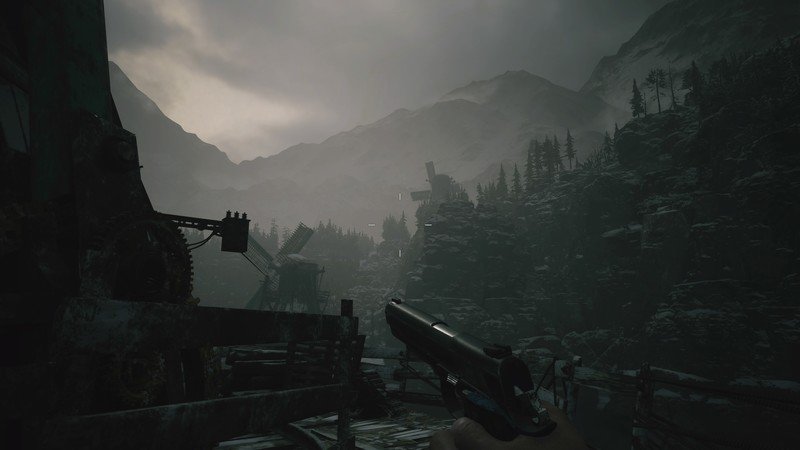
Just like with the narrative setup, Resident Evil Village brings in elements from other games in the franchise, along with some new ones, to tweak the formula just enough to be interesting for old players. You're still getting the same Resident Evil base gameplay that you've experienced for over a decade now (although it is in first-person now): You face an array of monsters, both normal-sized and giant, with nothing but your guns and your dwindling supply of ammo and health items.
The balance between survival horror and action has been shifted slightly in Village. Unlike Resident Evil 7, which reveled in making you feel ill-equipped for challenges, Village gives you maybe too much ammo, along with a lot of guns to choose from. Instead of wondering when you'll come across the shotgun, you get it almost immediately, and it's only the first of two you'll pick up. There's also a crafting system, introduced in 7 and refined here, that allows you to create ammo, health items, or even bombs with resources you pick up.
This might feel like a betrayal of the return to survival horror that I've been praising, but Village has found a great balance where you don't feel like you're overflowing with resources thanks to the challenging enemies at the end of your weapon. You are encouraged to fight instead of flee since killing enemies gives you prizes like Lei, a currency you can use at the merchant, or treasures you can sell, harkening back to Resident Evil 4, and in many ways, 5.
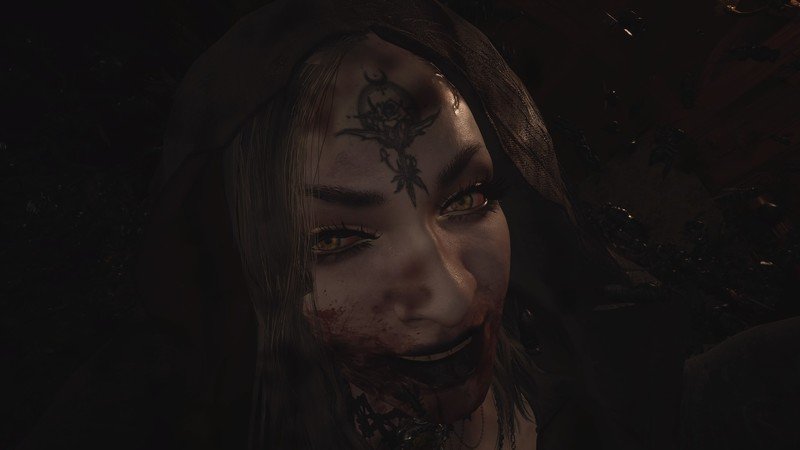
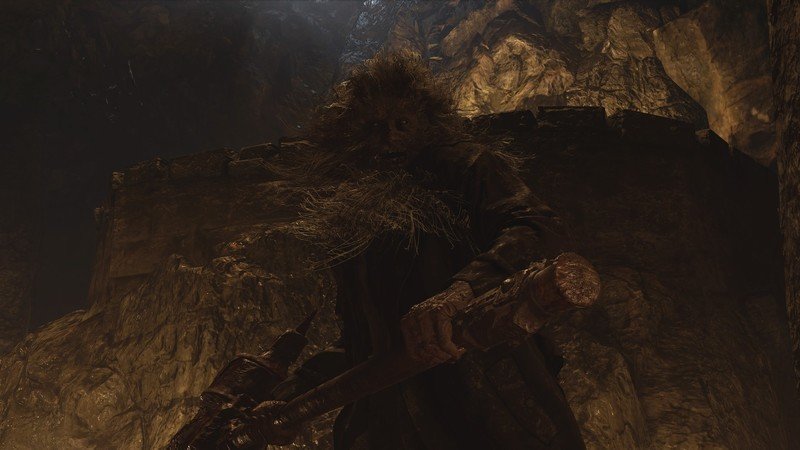
However, putting yourself in the middle of a battle is never easy, even on the standard difficulty that I played on. Even the most basic enemies, the Lycans, take a few shots to put down and can charge and dodge as they approach. You feel like you want to save your resources for big enemies, but they, along with new enemy types, can show up at any time. Once you get towards the end of the game, you'll also be bombarded with a ton of enemies and you'll need each bullet. So even though there were times where I felt like my inventory was full (yes, inventory management is, in Resident Evil tradition, a big deal once again), a new area would make me feel scarce all over again.
Plus, you're going to want to put that money into the merchant, called the Duke here. At any one of his setups you can upgrade your weaponry, buy supplies, or cook meals. New to Village is an upgrading mechanic that has you hunting down regular animals for meat, which you can then trade into the Duke for permanent upgrades to your health and defense. It seems like he eats most of what he cooks, but he lets you have some.

All of this creates a combat loop that never leans too far into one direction. You can go around shooting down each monster or animal, or you can play it more discreetly and never upgrade your weapons for a greater challenge. You won't reap the benefits of the Duke in this case, but the option is there if you want it. There is even a Challenges feature that rewards you with CP for completing achievements, which you can then put into subsequent playthroughs by buying fancy guns, and those often include trying out different playstyles.
Capcom tried something new here, hoping to maintain the survival horror / action game balance.
A lot of the Resident Evil formula is still here, although some of it might be to the game's detriment. For example, the map feature has always been important in the Resident Evil series, whether you want to check to see where you are or want to figure out if you've fully searched an area. It's more important than ever in Resident Evil Village. Like the aforementioned Raccoon City police station, you'll be doing a lot of backtracking, specifically in the village portion of the map. Each time you complete a Lord's area you go back here so there are plenty of opportunities to become intimately familiar with all its weird, windy paths and shortcuts.
Unfortunately, it's extremely easy to get lost, especially if you don't have the best sense of direction. All of the buildings look the same minus a couple of features on the important structures, and the various obstacles can make the map feel unreliable. It's tough to remember if you've gone down a certain path when multiple paths are blocked by trucks or debris and the map doesn't update fully to reflect those discoveries. There are also multiple areas of the map that are inaccessible by road, and it can be tough to keep it all straight. Luckily, there are plenty of secrets to discover in the village (and even some secret bosses in other areas), so backtracking will reap you plenty of rewards, but it does drag out the village sections and makes trying to get to the next Lord frustrating.
I think this comes back to how simple the map system is, and how much better it works when the game is more linear. Unfortunately, with all the backtracking and the more complex layout, it tends to be ineffective. It does, however, tell you where all the important treasures are so it's not completely useless.
Besides the tricky map, Resident Evil Village plays exactly as it should. Capcom tried something new here, hoping to maintain the survival horror / action game balance even with upping the amount of enemies you encounter and the resources you gather. Thanks to Ethan's new military training, it not only makes sense story-wise, but provides a fresher experience for those just coming off of 7, or even some of the earlier games.
Resident Evil Village visuals: How does it run on the PS5?
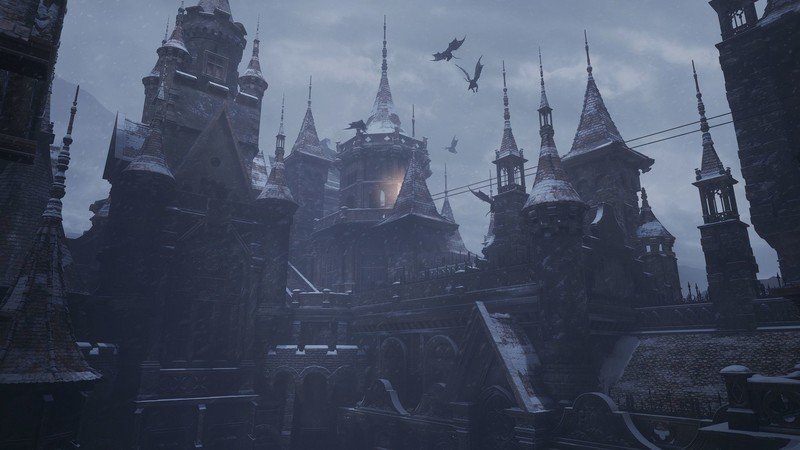
Players have two options for playing Resident Evil Village on the PS5. They can either play at 4K and 60 FPS without ray tracing, or turn ray tracing on and hit what Capcom says is about 45 FPS. However, according to Digital Foundry's test of the demo, the framerate can still manage to hit 60FPS with ray tracing on. When comparing both settings, it's clear that you need to play with ray tracing on. The game looks great regardless, but the ray tracing gives the light more prominence, making certain areas easier to explore. It also just looks incredible. It's subtle, as good ray tracing ought to be, but it makes the marble floors in Castle Dimitrescu look like actual marble or a single lamp's bloom feel more apparent.
However, if you want the highest framerate possible, you'll still get a fantastic looking game. Resident Evil Village isn't the type of game that needs maximum frames per second, but that comes down to personal preference. Either way, framerates were consistent throughout. I got next to no framerate drops. Lady Dimitrescu's daughters, who attack you with flies, did cause things to chug slightly, but it wasn't enough to impact my experience or mar that one particular fight.
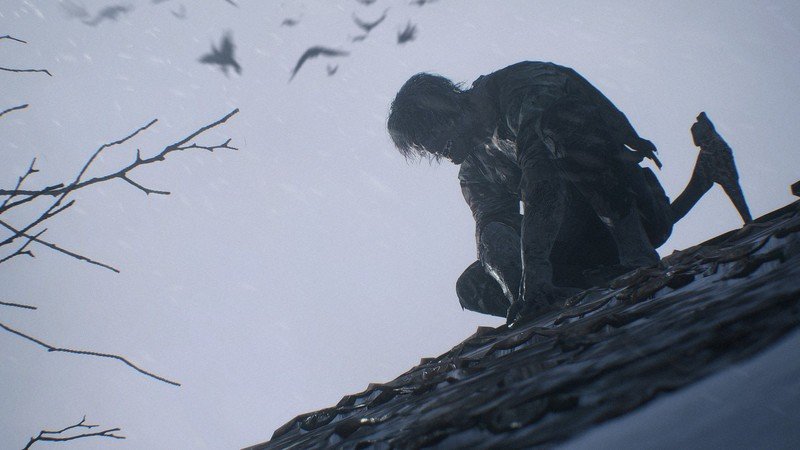
I can't speak to the performance on other platforms, but this is the best Resident Evil has ever looked. The haunting atmosphere, complete with fog effects, dead trees, and imposing architecture, really understands the gothic and classic horror inspirations on display. Approaching Castle Dimitrescu the first time or seeing the giant statues sitting in a mysterious off-road site in the village grants you a sense of scale, but the details on some of the rock or murals on walls of village huts makes the whole place feel lived in. It doesn't show off the true power of next-gen graphics in a definable way, but it is a gorgeous game.
This is the best Resident Evil has ever looked.
Speaking of next-gen, I'd be remiss to mention if the DualSense controller plays a role. Unfortunately, the DualSense features are minimal. The adaptive triggers do add weight to using weapons, which you can feel intensely when you're in the middle of a huge fight and just want to spam the trigger. Otherwise, there are occasional vibrations when something big like an explosion occurs but not, for example, when Lady Dimitrescu is clacking around her castle. One small detail that caught me by surprise is how you can feel something rustling inside the DualSense when you're switching between weapons shortcuts on the D-pad, like you're pulling something out of your backpack.
Resident Evil Village is a flashy game in a lot of ways. It has new characters and enemies, sprawling gothic architecture, detailed assets, and a lot of other gorgeous things to stare at. It does take the time, thankfully, to have some quieter moments of beauty and next-gen features. It just doesn't go all the way.
Resident Evil Village: Should you play?
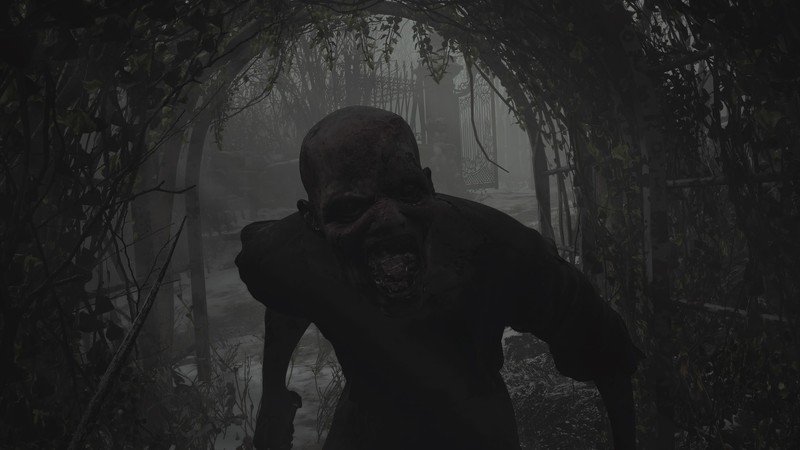
Resident Evil 7 was going to be a tough act to follow. It wasn't a perfect game, but it had the weight of a long-running franchise on its back. Capcom wanted to make a good Resident Evil game but it also wanted to try something new, and bring life to a fading, but still successful, franchise. It did the trick for a lot of players, creating a truly scary game that still felt like it belonged with the rest of the series.
4.5 out of 5
Resident Evil Village continues that journey. It doesn't reinvent the wheel, but it features so many new features and elements to the classic formula. It has a revamped combat system, including crafting and permanent upgrades, and strikes a balance not only between survival horror and action game but between new and old.
Village is more of a Resident Evil game than even 7 was, but it has way more heart. It's a love letter to the franchise and to horror games and media in general, specifically old horror movies from the classic Universal monsters era. It's full of homages for horror fans, which is a treat for those who can spot them, but it also creates versatility throughout the game for everybody. Each Lord section is unique, which makes a first playthrough very exciting. I never knew what was coming around the corner, and I haven't felt that playing a Resident Evil game in a long time.
The teaser for future projects at the end notwithstanding, this is an outstanding effort from Capcom. It shows that an old dog can learn some new tricks.

Carli contributed gaming content across Windows Central, Android Central, and iMore. Her last name also will remind you of a dinosaur. F

